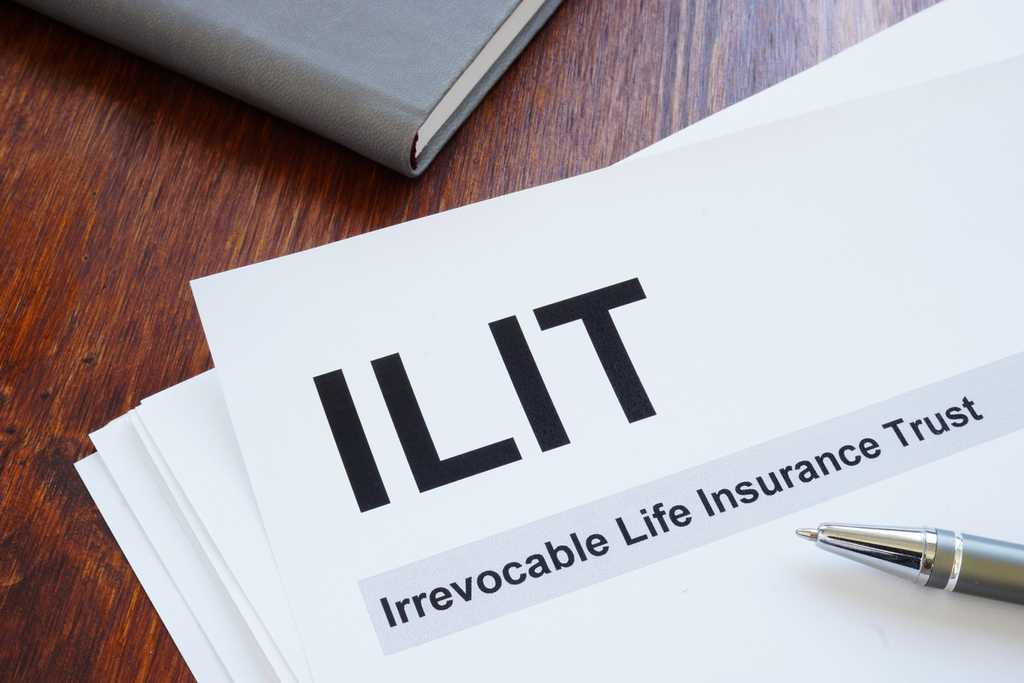An irrevocable life insurance trust (ILIT) is designed to protect generational wealth. It’s funded with a life insurance policy (or multiple life insurance policies). By placing the policy in a trust, the policyholder avoids having the death benefit included in the calculation for estate taxes upon their passing. An ILIT can also provide specific direction, through the trust document, regarding how and when the death benefit is to be used.
What is an ILIT?
Life insurance is an important part of financial planning, as it provides greater security to one’s spouse, children, or business partners. Upon a life insurance policyholder’s passing, their beneficiaries receive a death benefit that they can use to pay off debts, fund an education, help transfer a business, or more.
Many policyholders may not realize, however, that a life insurance death benefit can be included in the calculation of their estate’s value. That can make it subject to estate taxes at the federal and possibly the state level. As a tried-and-true tool for preserving generational wealth, an ILIT can help avoid this situation by providing a legal tax shelter for the death benefit.
How an ILIT works
An ILIT involves three parties: a grantor, the trustee, and the beneficiaries.
- The grantor is the one who (working with an attorney) creates and funds the ILIT. The ILIT may be funded with a new life insurance policy or an existing policy that's transferred into it.
- The trustee manages the ILIT. This person can be the grantor’s non-insured spouse, adult children, or an attorney. The trustee may be given discretionary control over how and when ILIT distributions are made.
- The beneficiaries are those who receive distributions from the ILIT upon the grantor’s death. These would be the typical beneficiaries of a life insurance policy, such as a spouse, children, other family members, or perhaps a business partner.
To set up an ILIT, the grantor works with an attorney specializing in trusts, estates, and probate items. The ILIT is funded either with a new life insurance policy or with an existing policy that is transferred into the trust. The grantor may include specifics for how the policy's death benefit is to be paid. But, as an irrevocable trust, an ILIT cannot be changed or revoked once it has been set up. The terms of the trust agreement are set.
After the ILIT is set up, the grantor must avoid any direct control (referred to as “incident ownership”). For instance, the ILIT must have its own checking account. The grantor may then contribute to this account, but the trustee will handle payment of the policy’s premium using those funds. The grantor cannot pay the premium directly.
When funds are deposited into the ILIT’s account, the trustee must send what’s known as a Crummey Letter to all the policy’s beneficiaries. This lets them know that they have the right to withdraw those funds, usually within 30 days. Once that period has passed, the trustee can pay the policy’s premium.
Upon the grantor’s death, the policy’s death benefit is deposited into the trust's checking account. The trustee then oversees the disbursement of funds to the beneficiaries, per any specifics outlined in the trust.
Benefits of an ILIT
An ILIT offers multiple potential benefits. These include:
Minimization of estate taxes
The death benefit of a life insurance policy owned outside of an ILIT will be included in the insured’s gross estate — the total dollar value of all assets — calculated upon their death. This makes it subject to estate taxes. On the other hand, the death benefit of a life insurance policy in an ILIT is not included in the gross estate calculation. In this way, the death benefit is sheltered from federal (and, if applicable, state) estate taxation.
Greater control of how the death benefit is paid
An ILIT can be designed to give the trustee discretionary power to make distributions of the policy's death benefit. This could be helpful if the beneficiaries are minors or those who otherwise may not be equipped to handle large amounts of money. An ILIT can also be set up, for instance, to require beneficiaries to reach a certain age before receiving any assets.
Protecting assets from creditors
If a person dies still owing money on credit cards, personal loans, or to medical providers, those creditors can demand payment from their estate. This means they can seek funds from their life insurance policy’s death benefit. However, if the policy is in an ILIT, those creditors cannot access the death benefit to satisfy those debts.
Frequently asked questions about ILITs
What type of trust is an ILIT?
An ILIT is an irrevocable trust. This means it cannot be rescinded, amended, or modified after its creation.
Why is a Crummey Letter needed?
The use of a Crummey Letter allows an ILIT to take advantage of the IRS' gift tax exclusion. This exclusion is essential for this type of trust to work. For 2022, this exclusion allows the grantor to contribute up to $16,000 to an ILIT in the form of a “gift.” The beneficiary must then be granted the right to immediate access to that gift — the Crummey Letter thus notifies them of this right. It’s in the beneficiaries’ interest to not withdraw those funds, as they’re used to pay the premium of the ILIT’s policy.
How much does it cost to set up an ILIT?
To set up an ILIT, a person should work with an attorney who handles trusts, estates, and probate items. Typically, costs range from a few hundred dollars to $2,000 for the initial setup of the ILIT, and $300-$500 annually for trustee duties (should you wish to have an attorney handle this). Costs may vary widely, however.
How is an ILIT maintained?
Once the ILIT is set up and funded, maintenance is straightforward. Each year, the grantor transfers money to the ILIT’s checking account. The trustee then sends Crummey Letters to each beneficiary to notify them of their right to withdraw those funds within 30 days. Once the 30-day period has passed, the trustee will ensure the life insurance policy’s premium is paid out of the ILIT’s account.
Does an ILIT require a tax return?
An ILIT will need its own IRS tax ID number and its own checking account. The ILIT trustee may need to file a tax return for the ILIT if the life insurance policy has a cash value that earns income during the year. A tax preparer can assist with specific reporting requirements.

